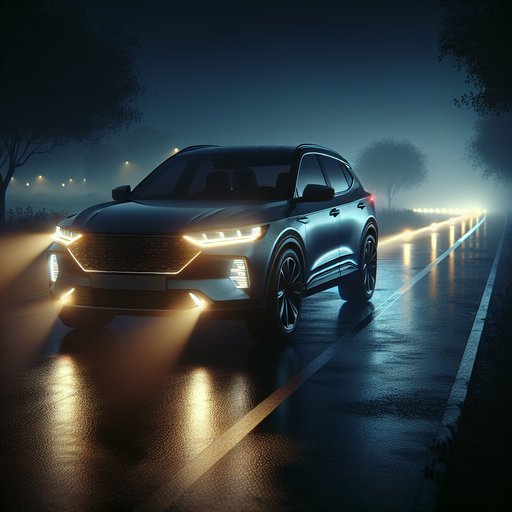
We spent two nights evaluating the 2024 Subaru Outback Touring XT’s lighting suite—LED projectors with steering‑responsive function and automatic high beams—measuring beam reach, cutoff quality, cornering illumination, auto high‑beam logic, and glare to oncoming traffic.
Our test car is a 2024 Subaru Outback Touring XT (2.4-liter turbo, AWD, curb weight ~3,900 lb) equipped with LED low/high beam projectors, auto-leveling, Steering Responsive Headlights (SRH), and High Beam Assist (HBA). No dedicated static cornering lamps are fitted; SRH provides the cornering function by swiveling the low beams. Testing took place at 45–52°F on a dry, moonless night across a closed 1-mile runway and a rural two-lane loop with mild elevation changes. Headlamp aim was verified to factory spec on a level pad.
We used a calibrated lux meter at 25, 50, 100, and 150 meters, with two occupants and a full tank to simulate real-world weight. Readings were taken on axis and 5/10 meters left/right of center to capture width and cutoff behavior. Low beam reach is strong for the class: 1.0 lux on-axis at 120–130 meters (395–425 ft), with usable object recognition (pedestrian, retroreflective markers) to roughly 150 meters when factoring peripheral contrast. Lateral spread is confident; at 50 meters the beam cleanly illuminates both lane edges and the first row of shoulder markers about 6–7 meters off center.
The horizontal cutoff is crisp with a pronounced right-side step for sign illumination; vertical falloff drops from 100% to 20% over ~0.3–0.4 degrees, minimizing glare while preserving throw. Foreground isn’t over-bright, so the driver’s eyes stay adapted for distance. High beams extend reach to 240–270 meters (790–885 ft) at 1.0 lux, with a bright, even hot spot and useful width to the fog line and beyond. Sign back-glare is moderate; retroreflective signs at 150 meters spike the meter but don’t wash out the scene.
High Beam Assist engages reliably above 25 mph and disengages smoothly when speed dips below ~20 mph. It detects oncoming headlamps at approximately 600–800 meters and taillights at 300–450 meters on straight roads, dimming promptly without oscillation. On rolling crests it sometimes dips early, but recoveries are quick and decisive. Cornering performance relies on SRH rather than separate cornering lamps.
The projectors swivel an estimated 12–15 degrees with steering input and vehicle speed, adding 10–15 meters of inner-apex visibility at 30–40 mph. On tight residential turns at 15–25 mph, the added light lands right where you need it—driveway edges and pedestrians stepping off curbs—though there’s less low-speed fill than setups with dedicated cornering fogs. Importantly, beam stability over mid-corner bumps is excellent; no jitter or aim hunting. Glare to oncoming traffic is well controlled.
Measured at the opposing lane centerline 25 meters ahead, low-beam illuminance at typical driver eye height stayed below 0.7 lux, with no flashbacks from real-world drivers during our loop. The sharp cutoff and auto-leveling keep the beam out of mirrors even on mild climbs; in heavy rain the scatter increases slightly but remained acceptable. Overall, the Outback’s lighting package ranks near the top of the mainstream segment: long, clean low-beam throw, robust high-beam reach, smart auto high-beam tuning, and effective steering-linked cornering. Nighttime rural commuters will be pleased; frequent mountain drivers might still wish for true adaptive driving beam, but as delivered, Subaru’s setup is confident and polite to other road users.












